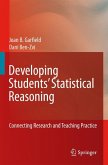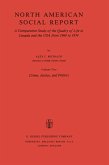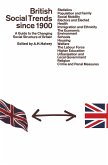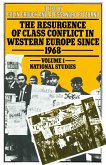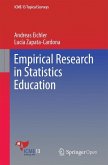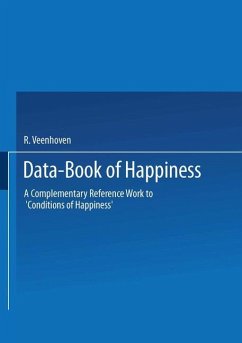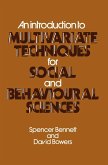"Through his devastating work on common myths about social problems, Joel Best has established himself as a brilliant observer of our national fads and scares. In this latest book, Best confronts yet more of the pseudo-statistics by which we are bamboozled day by day. One obvious question comes to mind. If he can deal with highly significant topics in such lucid and enjoyable prose, why can't other social scientists begin to match him?"--Philip Jenkins, author of The New Anti-Catholicism: The Last Acceptable Prejudice
"Joel Best continues to confront us with the delicious lunacy of statistical gaffes and fantasies. Whether discussing 'deaths from falling coconuts,' teenage bullying, or likelihood of contracting breast cancer, Best is teaches us to avoid the dangers of statistical illiteracy. As his cogent and comic examples from the media amply demonstrate, there is much teaching yet to be done. While we like to believe that it is our opponents who are fools with figures, this volume demonstrates that liberals, conservatives, libertarians, lawyers, physicians, and educators fall in the same numerical traps."--Gary Alan Fine, co-author of Whispers on the Color Line: Rumor and Race in America
"Best provides us with another telling compendium of misleading statistics about a variety of topical issues. His approach to explicating them is lucid, instructive, and quite engaging."--John Allen Paulos, author of Innumeracy
Description
In this sequel to the acclaimed Damned Lies and Statistics, which the Boston Globe said "deserves a place next to the dictionary on every school, media, and home-office desk," Joel Best continues his straightforward, lively, and humorous account of how statistics are produced, used, and misused by everyone from researchers to journalists. Underlining the importance of critical thinking in all matters numerical, Best illustrates his points with examples of good and bad statistics about such contemporary concerns as school shootings, fatal hospital errors, bullying, teen suicides, deaths at the World Trade Center, college ratings, the risks of divorce, racial profiling, and fatalities caused by falling coconuts. More Damned Lies and Statistics encourages all of us to think in a more sophisticated and skeptical manner about how statistics are used to promote causes, create fear, and advance particular points of view.
Best identifies different sorts of numbers that shape how we think about public issues. Entertaining, enlightening, and very timely, this book offers a basis for critical thinking about the numbers we encounter and a reminder that when it comes to the news, people count--in more ways than one.
Entertaining, enlightening, and very timely, this book offers a basis for critical thinking about the numbers we encounter and reminds us that when it comes to the news, people count--in more ways than one.
Contents
Acknowledgments
Preface: People Count
1. Missing Numbers
2. Confusing Numbers
3. Scary Numbers
4. Authoritative Numbers
5. Magical Numbers
6. Contentious Numbers
7. Toward Statistical Literacy?
Notes
Index
"Joel Best continues to confront us with the delicious lunacy of statistical gaffes and fantasies. Whether discussing 'deaths from falling coconuts,' teenage bullying, or likelihood of contracting breast cancer, Best is teaches us to avoid the dangers of statistical illiteracy. As his cogent and comic examples from the media amply demonstrate, there is much teaching yet to be done. While we like to believe that it is our opponents who are fools with figures, this volume demonstrates that liberals, conservatives, libertarians, lawyers, physicians, and educators fall in the same numerical traps."--Gary Alan Fine, co-author of Whispers on the Color Line: Rumor and Race in America
"Best provides us with another telling compendium of misleading statistics about a variety of topical issues. His approach to explicating them is lucid, instructive, and quite engaging."--John Allen Paulos, author of Innumeracy
Description
In this sequel to the acclaimed Damned Lies and Statistics, which the Boston Globe said "deserves a place next to the dictionary on every school, media, and home-office desk," Joel Best continues his straightforward, lively, and humorous account of how statistics are produced, used, and misused by everyone from researchers to journalists. Underlining the importance of critical thinking in all matters numerical, Best illustrates his points with examples of good and bad statistics about such contemporary concerns as school shootings, fatal hospital errors, bullying, teen suicides, deaths at the World Trade Center, college ratings, the risks of divorce, racial profiling, and fatalities caused by falling coconuts. More Damned Lies and Statistics encourages all of us to think in a more sophisticated and skeptical manner about how statistics are used to promote causes, create fear, and advance particular points of view.
Best identifies different sorts of numbers that shape how we think about public issues. Entertaining, enlightening, and very timely, this book offers a basis for critical thinking about the numbers we encounter and a reminder that when it comes to the news, people count--in more ways than one.
Entertaining, enlightening, and very timely, this book offers a basis for critical thinking about the numbers we encounter and reminds us that when it comes to the news, people count--in more ways than one.
Contents
Acknowledgments
Preface: People Count
1. Missing Numbers
2. Confusing Numbers
3. Scary Numbers
4. Authoritative Numbers
5. Magical Numbers
6. Contentious Numbers
7. Toward Statistical Literacy?
Notes
Index


